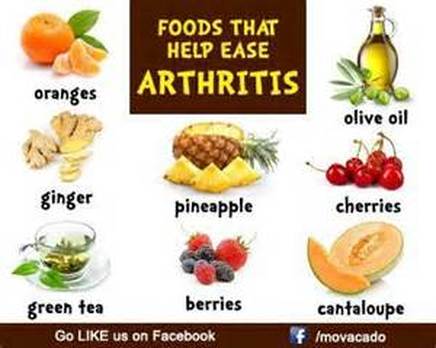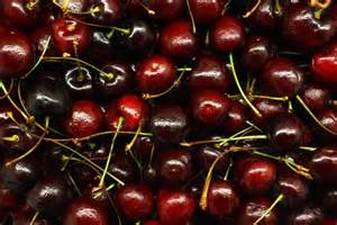What to Eat
Arthritis is a general term encompassing conditions that share joint pain and inflammation. Typical treatment involves pain-reducing medication. While there is no definitive arthritis diet, research suggests including anti-inflammatory foods in your diet and limiting foods that may trigger joint pain.
Arthritis is a general term encompassing conditions that share joint pain and inflammation. Typical treatment involves pain-reducing medication. While there is no definitive arthritis diet, research suggests including anti-inflammatory foods in your diet and limiting foods that may trigger joint pain.

Although there are no specific nutritional guidelines for an “arthritis diet,” most doctors recommend eating healthfully in general. That doesn’t mean you have to give up all of your favorite foods. Healthy eating is simply incorporating more of the foods that help maintain your weight and reduce inflammation, and less of the foods that lead to obesity and inflammation.
The U.S. Department of Agriculture recommends filling half of your plate with fruits and vegetables. These plant-based foods are packed with antioxidants, which can help reduce blood markers of inflammation such as C-reactive protein and interleukin-6.
Recommended servings of fruit and vegetables vary based on your age, gender and activity level. Adults need to eat about 1½ to 2 cups of fruit, and 2 to 3 cups of vegetables per day. When it comes to picking fruits and vegetables, “A variety of colors ensures a variety of nutrients, says Christine McKinney, RD, a clinical dietitian who works with arthritis patients at Johns Hopkins Bayview Medical Center in Baltimore. Choose a rainbow of colors:
Although there are no specific nutritional guidelines for an “arthritis diet,” most doctors recommend eating healthfully in general. That doesn’t mean you have to give up all of your favorite foods. Healthy eating is simply incorporating more of the foods that help maintain your weight and reduce inflammation, and less of the foods that lead to obesity and inflammation.
The U.S. Department of Agriculture recommends filling half of your plate with fruits and vegetables. These plant-based foods are packed with antioxidants, which can help reduce blood markers of inflammation such as C-reactive protein and interleukin-6.
Recommended servings of fruit and vegetables vary based on your age, gender and activity level. Adults need to eat about 1½ to 2 cups of fruit, and 2 to 3 cups of vegetables per day. When it comes to picking fruits and vegetables, “A variety of colors ensures a variety of nutrients, says Christine McKinney, RD, a clinical dietitian who works with arthritis patients at Johns Hopkins Bayview Medical Center in Baltimore. Choose a rainbow of colors:
- Dark Green: spinach, greens and broccoli
- Red: strawberries, cherries, tomatoes and beets
- Yellow: bananas, squash
- Orange: sweet potatoes, squash, oranges and carrots

Cherries help fight Arthritis.
Many arthritis sufferers swear by black cherry juice, an antioxidant-rich beverage made from the Prunus serotina plant. Also used to treat gout, black cherry juice is particularly high in anthocyanins (a class of antioxidants also found in foods like berries, red onions, kidney beans, pomegranates, and red grapes).
So far, few studies have tested the health effects of black cherry juice. However, research suggests that anthocyanins may help reduce inflammation (a biological process closely linked to both osteoarthritis and rheumatoid arthritis, in addition to gout).
What's more, some studies show that increasing your antioxidant intake may help protect against both types of osteoarthritis.
...read more at: The Arthritis Foundation
Many arthritis sufferers swear by black cherry juice, an antioxidant-rich beverage made from the Prunus serotina plant. Also used to treat gout, black cherry juice is particularly high in anthocyanins (a class of antioxidants also found in foods like berries, red onions, kidney beans, pomegranates, and red grapes).
So far, few studies have tested the health effects of black cherry juice. However, research suggests that anthocyanins may help reduce inflammation (a biological process closely linked to both osteoarthritis and rheumatoid arthritis, in addition to gout).
What's more, some studies show that increasing your antioxidant intake may help protect against both types of osteoarthritis.
...read more at: The Arthritis Foundation